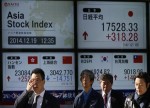
- All Instrument Types
- Indices
- Equities
- ETFs
- Funds
- Commodities
- Currencies
- Crypto
- Bonds
- Certificates
Please try another search

Is a September Lull Inevitable? Play 6 ETFs

After exiting a superb August, investors must have shifted focus to the likely market upheaval in September. This is especially true given its ill-famed seasonality in the equity market.
September is historically the worst month of the year for stocks. According to moneychimp.com, a consensus carried out from 1950 to 2019 has revealed that September ended up offering positive returns in 32 years and negative returns in 38 years, with an average return of negative 0.57%, which is worse than any month.
Terrifying financial events like the start of the Great Depression in 1929 or the fall of Lehman Brothers in 2008 all crept up in the month of September. Though this September has started on a strong note on hopes of a faster launch of coronavirus vaccines and a prolonged low-rate environment, some new disappointing data started playing foul all over again on Sep 3. The S&P 500 posted its worst single-session drop in nearly three months.
ADP’s closely watched monthly private payrolls report showed that just 428,000 new jobs were added in August, or fewer than half the 1 million that had been expected. U.S. service sector activity expanded at a slower-than-expected pace in August. U.S. trade deficit grew to $63.6 billion in July, indicating the largest gap since 2008.
Steep selloffs set in on Sep 3. We believe that investors too started to book profits after a monster rally in August. High-profile tech names were sold off heavily. Amazon (NASDAQ:AMZN) (down 4.6% on Sep 3), Apple (NASDAQ:AAPL) (Down 8%), Microsoft (NASDAQ:MSFT) (down 6.2%), Tesla (NASDAQ:TSLA) (down 9%), Zoom (down about 10%) — strongest performers in past months — were badly hurt.
The S&P 500, the Dow Jones, the Nasdaq and the Russell 2000 were off 3.5%, 2.8%, 5% and 3%, respectively, on Sep 3. The selling trend indicates that winners are emerging as the key losers now. All these make it more important to pin point ETFs that have the power to navigate such threats, yet can make the most of the upbeat possibilities.
Consumer Staples Select Sector SPDR Fund (XLP)
The sector is non-cyclical in nature and likely to stay strong even amid the worst selloffs as these deal with necessary items that consumers need on a daily basis. The fund XLP lost 1.7% on Sep 3 and shed about 0.7% after hours. The fund yields about 2.42% annually.
Vanguard Consumer Discretionary Index Fund ETF Shares (VCR)
A lot of factors may favor this sector. Low energy prices, subdued rates, fewer-than-expected filing of unemployment claims in recent weeks and last-minute back-to-school/college shopping may keep the space afloat. All these may make XLY better positioned than the other cyclical names. The fund lost 3.9% on Sep 3, way lesser than the high-growth tech names.
PIMCO Investment Grade Corporate Bond Index Exchange-Traded Fund (CORP)
The underlying ICE (NYSE:ICE) BofAML US Corporate Index is an unmanaged index comprising U.S. dollar denominated investment grade, fixed rate corporate debt securities publicly issued in the U.S. domestic market with at least one-year remaining term to final maturity and at least $250 million outstanding. Higher yield opportunity and unlimited Fed support made the corporate bond ETF space a real winner in recent months. The fund yields 2.92% annually and added 0.05% on Sep 3.
Vanguard S&P 500 Value Index Fund ETF Shares (VOOV)
The S&P 500 Value Index measures the performance of large-capitalization value stocks. Value stocks are safer bets in an edgy environment. Moreover, the segment has so far been a laggard and thus has more compelling valuation than growth stocks. The fund charges 10 bps in fees and yields 2.49% annually. It lost just 1.8% (read: Fed Targets "Average Inflation" of 2%: ETF Strategies to Play).
iShares S&P Moderate Allocation Fund (AOM)
We would also like to pick a full-fledged defensive ETF like AOM. The fund takes a fund-of-funds approach and is a combination of bonds and global stocks. Fixed income makes up about 54.4% of the fund followed by 44.9% in equities. The United States accounts for about 63.5% of the portfolio, while Japan (4.75%) and China (3.86%) take the next two spots. The fund yields about 2.27% annually and retreated only 1.5%.
SPDR S&P Dividend (NYSE:SDY) ETF (SDY)
The underlying S&P High Yield Dividend Aristocrats Index measures the performance of the highest dividend yielding S&P Composite 1500 Index constituents that have followed a managed-dividend policy of consistently increasing dividends every year for at least 20 consecutive years. As a result, dividend aristocrats call for a safer approach. The fund was off 1.5% on Sep 3 (read: ETF Asset Report for August 2020).
Want key ETF info delivered straight to your inbox?
Zacks’ free Fund Newsletter will brief you on top news and analysis, as well as top-performing ETFs, each week. Get it free >>
Want the latest recommendations from Zacks Investment Research? Today, you can download 7 Best Stocks for the Next 30 Days. Click to get this free report
Consumer Staples Select Sector SPDR ETF (NYSE:XLP): ETF Research Reports
Vanguard Consumer Discretionary ETF (VCR): ETF Research Reports
SPDR SP Dividend ETF (SDY): ETF Research Reports
iShares Core Moderate Allocation ETF (AOM): ETF Research Reports
Vanguard SP 500 Value ETF (VOOV): ETF Research Reports
PIMCO Investment Grade Corporate Bond Index ETF (CORP): ETF Research Reports
To read this article on Zacks.com click here.
Zacks Investment Research
Want the latest recommendations from Zacks Investment Research? Today, you can download 7 Best Stocks for the Next 30 Days. Click to get this free report
Related Articles

Shares of Caesars Entertainment (NASDAQ:CZR), a leading gambling stock, traded around 3% higher on Wednesday morning, though the stock was trading around 1.5% lower shortly before...

Amazon (NASDAQ:AMZN) is making a significant push into the future with a robust investment in robotics and artificial intelligence. The company has earmarked $35 billion for...

Home Depot’s (NYSE:HD) Q4 2024 report and guidance for 2025 have plenty to be unhappy about, but the simple truth is that this company turned a corner in 2024. It is on track for...
Are you sure you want to block %USER_NAME%?
By doing so, you and %USER_NAME% will not be able to see any of each other's Investing.com's posts.
%USER_NAME% was successfully added to your Block List
Since you’ve just unblocked this person, you must wait 48 hours before renewing the block.
I feel that this comment is:
Thank You!
Your report has been sent to our moderators for review





Add a Comment
We encourage you to use comments to engage with other users, share your perspective and ask questions of authors and each other. However, in order to maintain the high level of discourse we’ve all come to value and expect, please keep the following criteria in mind:
Enrich the conversation, don’t trash it.
Stay focused and on track. Only post material that’s relevant to the topic being discussed.
Be respectful. Even negative opinions can be framed positively and diplomatically. Avoid profanity, slander or personal attacks directed at an author or another user. Racism, sexism and other forms of discrimination will not be tolerated.
Perpetrators of spam or abuse will be deleted from the site and prohibited from future registration at Investing.com’s discretion.